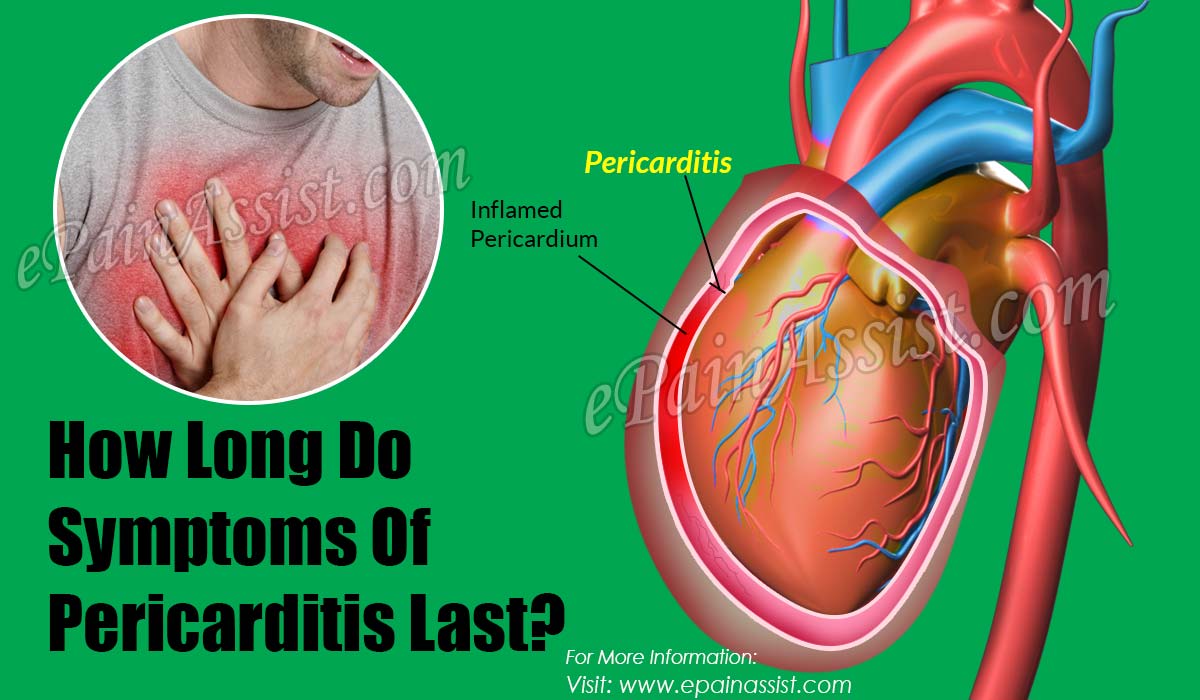Pericarditis refers to the inflammation of the pericardium. The pericardium is the dual layer sac which surrounds the heart. It comprises of two layers, which include visceral and parietal layer and between the two layers, the pericardial fluid is existent. Any sort of inflammation in the pericardium is referred to as pericarditis. At times infection might occur in the pericardial fluid itself. Therefore, proper and early diagnosis should be done to prevent progression of the disease.
Before knowing how long the symptoms of pericarditis last one should know what the symptoms of pericarditis are:-
Pain: Pain in the chest is one of the most important symptoms. Pain is retrosternal in nature and sharp shooting. It may radiate to the shoulder. Pain might be relieved on leaning forward.
Effusion: Pericardial effusion is another sign of pericarditis. Due to excessive fluid sometimes the base of the lung gets compressed. This is known as Ewart’s sign, a patch of dullness heard beneath the left scapula. Later this condition may lead to cardiac tamponade.
Friction Rub: Pericardial friction rub- this is even associated with pericarditis.

How Long Do Symptoms Of Pericarditis Last?
Pericardial symptoms usually last for nearly 3 to 7 days. It might get resolved on itself in rare cases. Most of the cases require hospital care. The guidelines issued by the doctor should be followed strictly. If not treated early it may lead to chronic pericarditis. What is the time duration after which pericarditis is termed as chronic? Minimum three months are needed to describe pericarditis as chronic. If pericarditis does not resolve after three months’ time, it is termed as chronic pericarditis. Then, what measures should be taken on initial stage to prevent pericarditis?
Proper medications which include-
- Anti-inflammatory drugs should be given in initial stages.
- NSAIDs should be given to the patient.
- If NSAIDs cannot be given then the patient should be given colchicine.
At last, corticosteroids should be given when all the above-mentioned medicines fail to treat the patient. But corticosteroids should be given with utmost care as this may delay healing of the wound.
Pericardial stripping should be considered as last resort. This should be done when all the medical treatment fails.
Besides this one cannot determine how long the symptoms will last as it varies from person to person. In a person with good immunity, maybe the disease resolves on itself while in cases where immunity is compromised the disease may progress to chronic stage bit early. Thus, the person internal environment also determines the progression of the disease. Another important thing is when the first symptom appeared. If a person is attentive one should report early and get diagnosed oneself quickly and get full treatment before the progression of the disease.
The persistence of symptoms may lead to complication so treat the disease as early as possible. The first sign is the appearance of chest pain and it needs to be differentiated from myocardial infarction. Usually it is difficult to differentiate it from myocardial infarction ECG is used to differentiate between the two diseases. Echocardiography is the investigation of choice.
Usually acute pericarditis last for a week, but chronic cases may last for a longer duration. Pericarditis if not treated may lead to heart failure and other cardiac manifestations. The person should not wait for the symptoms to get worse. With the onset of pain, the proper treatment should be initiated. Symptoms may persist for long in cases where proper treatment is not given. If the person comes with complications first and foremost initial manifestation should be dealt.
In short, the symptoms vary from person to person. Early diagnosis and treatment is mainstream technique for the management of the condition. Chest pain should be looked after carefully. The main objective is to prevent the emergence of complications. So, as we all know a stitch in time saves nine.
Also Read:
